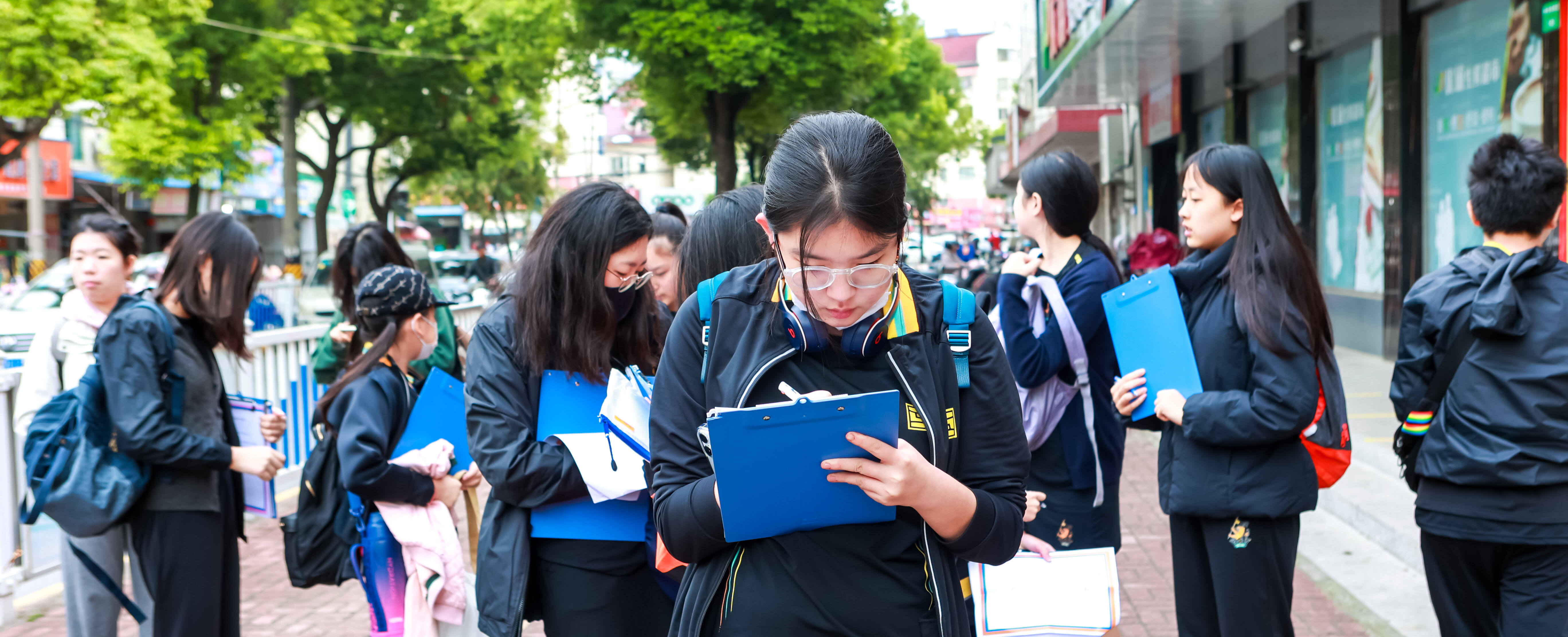
Art and Design Week at Hiba Academy Shanghai was held on 16-19 November. It was an opportunity for our pupils to cultivate their visual skills, tap into their creativity and learn about how art and design touch our lives daily. This year's theme was 'From micro to macro, acelebration of industry in China'.
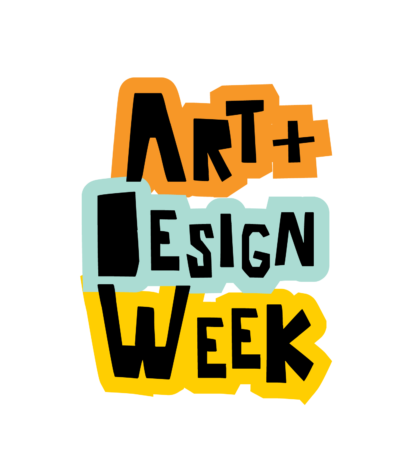
The topic emerged from a discussion in the art department. Members of the department were talking about the year that was, how there was a reliance around the world on China for products and how COVID-19 caused a global disruption to distribution. From the discussion emerged the thought that Arts and Design Week focus on the powerful impact of Chinese industry and how advanced it is compared with other nations.
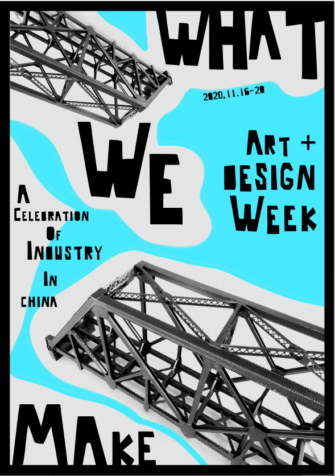
To that end, each grade from 1 – 8 collaborated on a unique art and design installation that showcased a prosperous industry in China. The materials our pupils used in these projects also served as a powerful educational tool. Weeks before Art & Design Week, Mr Abood called on our pupils to donate used materials like denim, plastic, nuts, bolts and delivery packaging. Mr Abood says:“A big part of the IGSCE art curriculum is exploring different materials. We saw giving them these unconventional materials as a way to get the children out of their creative comfort zones, but we also wanted them to be more mindful of the things we use and then throw away. Not everything we use needs to go into a landfill. In fact, a lot of it can be put to good use in art and design.”
Our grade 1 pupils explored one of China's oldest industries, the production of silk. This fine textile's manufacturing technique was for centuries a jealously guarded secret that was coveted by nations around the world.
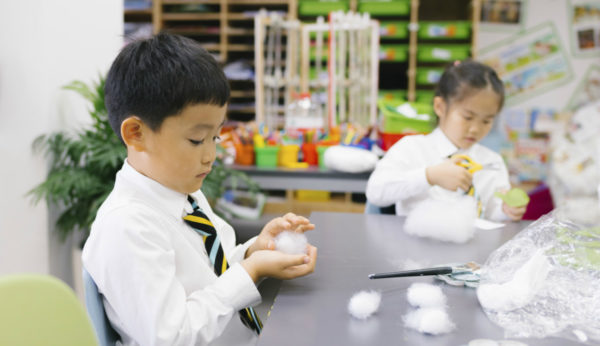
The pupils collaborated to build an installation centred around a gigantic silkworm cocoon fashioned from a tent and decorated with mulberries made from space clay and mulberry leaves made from synthetic silk, modroc and recycled materials. The pupils had an opportunity to create something interactive and tactile to learn about a product that has long contributed to China's prosperity.
Jumping ahead to the contemporary era, China is also a key producer of green technology, such as solar panels. This was the theme that our grade 2 pupils focused on for their installation. Pupils were provided with beads and repurposed plastics to create an imaginary rendering of a solar panel.
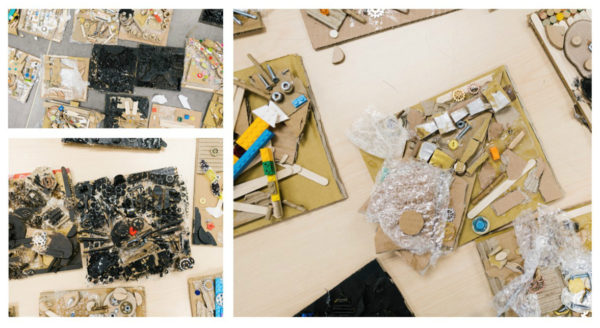
In the process, they learned about the importance that sustainable energy sources will have in the years to come as fossil fuels become more scarce.
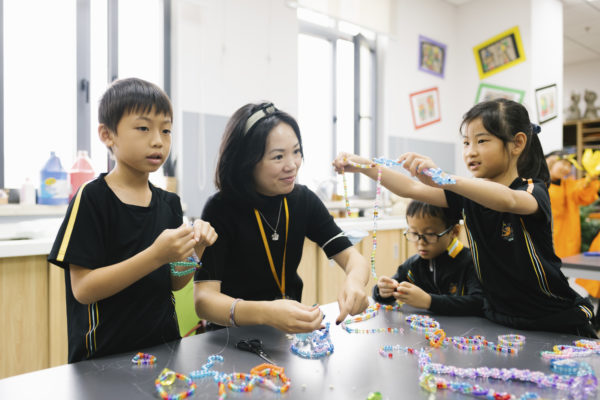
Our grade 3 pupils got the opportunity to peer back into history with the Great Tea Horse Road. While not as renowned as the Great Silk Road, this ancient trade route was vital to China's economy for centuries as it linked Southwestern China with India, Myanmar and beyond, traversing some particularly treacherous territory. Using 36 canvases, the pupils build an artistic rendering of the Tea Horse Road blazing a trail across the installation by staining it with the earthen colour of black tea. The pupils then sketched depictions of life along the Tea Horse Road, adding topographical features using repurposed plastic. This unique mix of artistic media allowed our pupils to learn about one of China's most famous exports, tea, as well as one of its biggest present-day challenges, dealing with plastic waste.
In grade 4, our pupils looked to factories, the great engines of China's economy, for inspiration. Using nuts, bolts and other industrial materials, each pupil designed their own three-dimensional Chinese zodiac portrait in a steampunk theme. They then painted them the colour of burnished brass to evoke a retro-industrial feel.
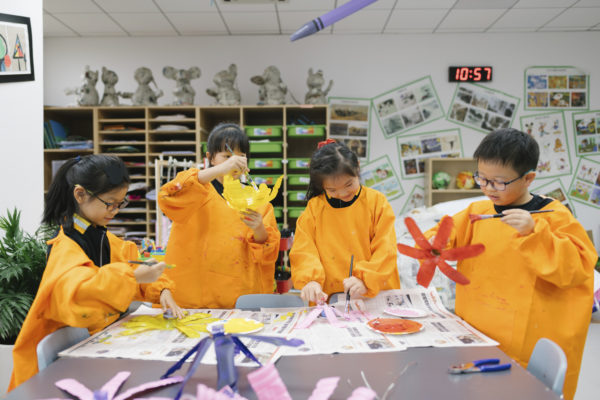
Noodles are among the most manufactured foodstuffs in China. This delicious staple of Chinese cuisine served as the inspiration for grade 5's installation. The pupils constructed noodles and other morsels from space clay to go into a gigantic noodle bowl. They also designed and made their own noodle bowls from modroc.
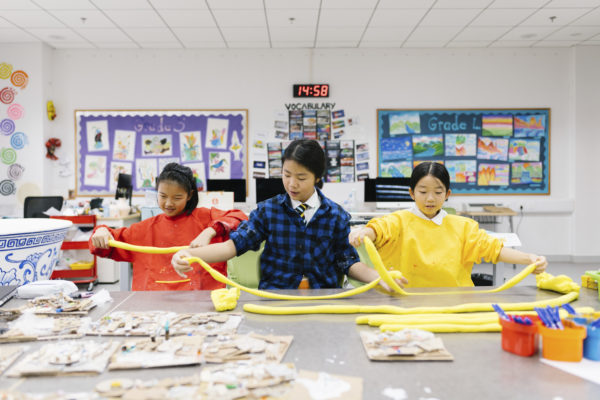
Grade 6 pupils tapped into their inner Vivienne Tam with a textile design project. The assignment was to make traditional Chinese textile pattern designs. They then applied these patterns to model coats made from discarded newspapers. The pupils also incorporated repurposed denim into their designs in unique and innovative ways.
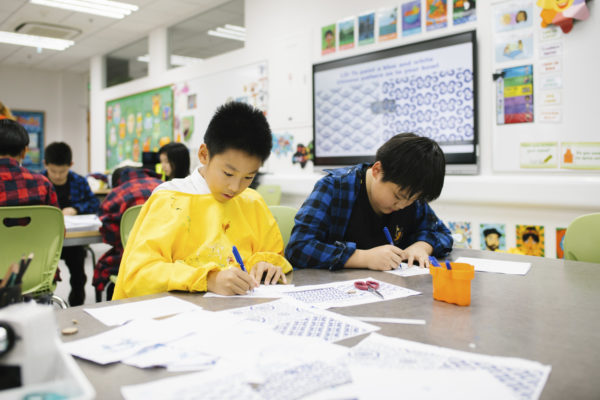
The focus for our grade 7 pupils was infrastructure. Using corrugated cardboard from discarded packaging, they build a three-dimensional city plan complete with buildings and streets.
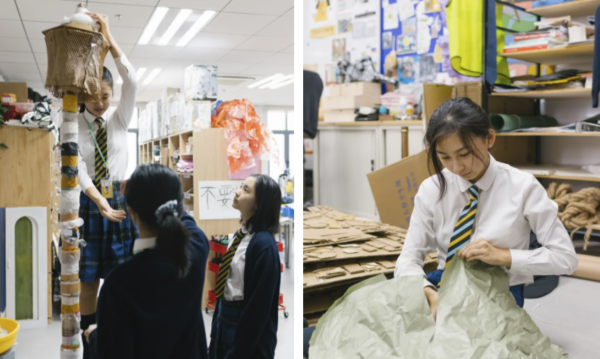
To represent the ways we move people and goods throughout the city, they threaded wires through the streets, connecting them to various nodes in the city.
Finally, our pupils in grade 8 took a deep dive into packaging and waste. With the rise of e-commerce, packaging is a growing challenge in China. So much of what we purchase is over-packaged, and those materials end up landfill or in the ocean.

To underscore this point, the pupils created a tableau featuring one of the key conveyances of packages, a motorcycle, alongside a park bench and a streetlight. The entire scene was wrapped and covered in packaging materials. And then it was all wrapped and covered some more. It was a powerful commentary on how so much of what we use now is disposable, but it never really goes away. Supplementing the installations were contributions from our music and performing arts departments. Their classes created evocative soundscapes to accompany each installation. Viewers were able to engage in a fully immersive experience by listening to these soundscapes on headphones. Mr Abood is eager to point out these lessons were about more than teaching our pupils about making art. “Design is the life force of the arts. It's the aspect of the arts that we all come in contact with the most, use the most, and yet take for granted the most. ”
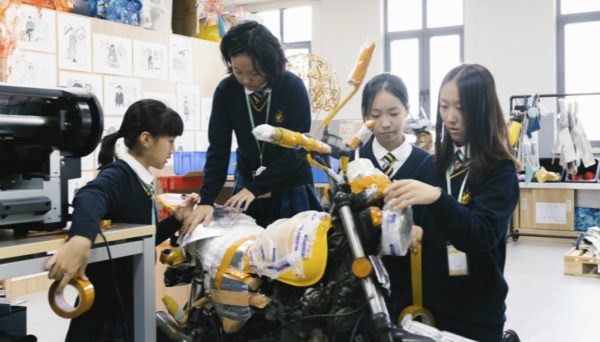
He adds, "But, in keeping with Hiba's philosophy of holistic education, we also wanted to use Art & Design Week as an opportunity to connect design to other disciplines, like maths, science, engineering and social studies. To show that art and design are about much more than aesthetics."